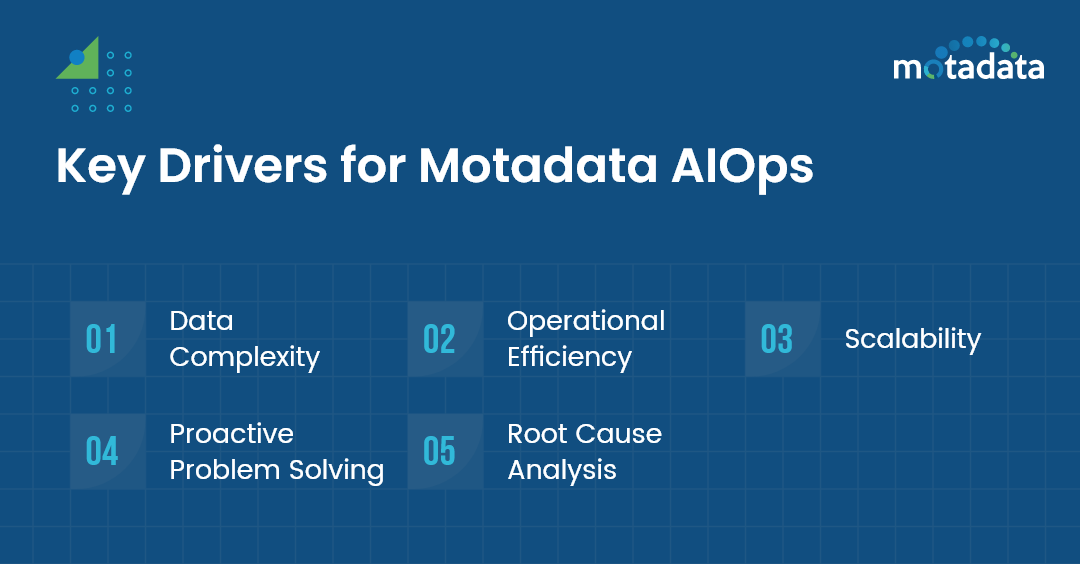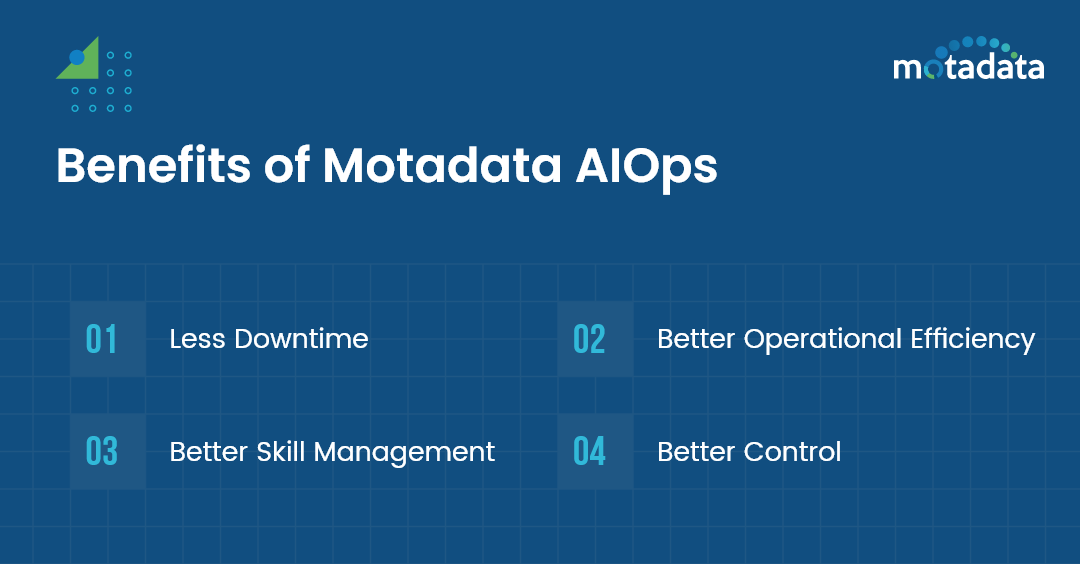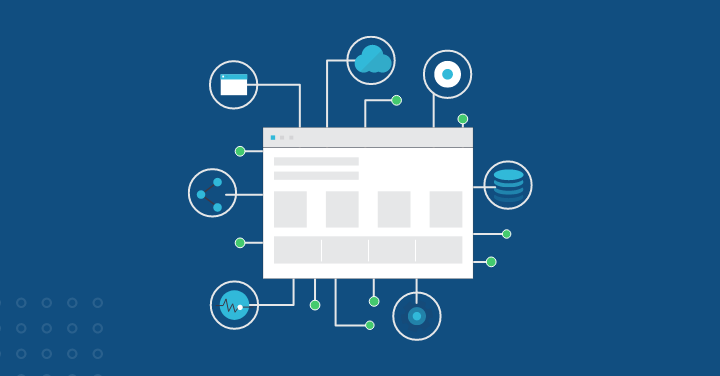What is AIOPS?
The term “AIOps” is believed to have originated from Gartner a renowned research and advisory firm in information technology.
Gartner coined the term to describe the convergence of Artificial Intelligence (AI) and IT operations, highlighting the use of AI and machine learning techniques to enhance the management and analysis of IT operations data.
Since its inception, AIOps has gained significant traction and recognition as a transformative approach in the industry.
AIOps, short for Artificial Intelligence for IT Operations, refers to applying Artificial Intelligence (AI) and Machine Learning (ML) techniques in managing and optimizing IT operations.
It involves leveraging advanced algorithms and analytics to collect, analyze, and interpret vast amounts of data generated by various IT systems and infrastructures.
According to Gartner, 40% of I&O teams will use AI-augmented automation in large enterprises by 2024, resulting in higher IT productivity with greater agility and scalability.
AIOps aims to automate and enhance IT operations processes, including monitoring, event correlation, incident management, and root cause analysis.
Combining AI capabilities with operational data, AIOps enables organizations to gain valuable insights, improve system performance, detect and resolve issues proactively, and ultimately enhance their IT environments’ overall efficiency and reliability.
In This article discuss the benefits of an AIOps, such as increased efficiency and reduced costs, as well as how it can be achieved using AI technologies.
Many organizations are leveraging innovative solutions, including ai chatbot character, to enhance their operational workflows.
How Does AIOps Works?
AIOps combines the power of big data analytics, machine learning, and automation to transform IT operations management.
- It is usually composed of three major sub-systems
- The Analytic Sub-system uses AI tools to gather data about the state of the IT environment</li
- The Machine Learning Sub-system applies algorithms to analyze this data and automatically generate predictions about how it will change in the future
The Automation Sub-system uses existing processes, policies, and templates to automate daily tasks. This can be done by generating scripts for humans to execute or directly executing them without human intervention.
Why need for AIOps?
With modern technologies like micro-servers and containerization, moving from static systems to software-defined resources became imperative, which could be changed and reconfigured on the fly.
The resulting complexities that arose could be defined at three levels: System, Data, and tools. Legacy monitoring systems fell short with their static rule-based systems.
This is when players in the ITOps domain felt the need for a platform that uses AI and ML to process a large amount of data to give IT teams real-time insight into emerging issues.
The key drivers behind the need for AIOps are:
1. Data Complexity:
The sheer volume, variety, and velocity of data generated by modern IT systems make it increasingly difficult for human operators to process and analyze effectively.
AIOps utilizes AI and ML algorithms to analyze vast amounts of data in real-time, extracting actionable insights and identifying patterns that need to be noticed by manual analysis.
2. Operational Efficiency:
Traditional IT operations management approaches are often reactive, relying on human operators to manually identify and respond to incidents.
AIOps introduce automation and intelligent alerting mechanisms, reducing the burden on human operators and enabling them to focus on more critical and strategic tasks.
3. Proactive Problem-Solving:
AIOps enable IT teams to detect and prevent issues before they impact end-users proactively.
By analyzing historical data and patterns, AIOps can identify potential anomalies or performance degradations, allowing IT teams to take corrective actions proactively.
4. Root Cause Analysis:
Troubleshooting complex IT issues can be time-consuming and challenging.
AIOps employs advanced analytics and correlation techniques to identify the root causes of problems more quickly and accurately, reducing mean time to resolution (MTTR) and minimizing the impact on business operations.
5. Scalability:
Modern IT infrastructures are highly scalable, often spanning multiple cloud platforms, on-premises data centres, and hybrid environments.
AIOps provides a unified and holistic view of the entire IT landscape, enabling IT teams to manage and monitor diverse systems and technologies at scale effectively.
The need for AIOps arises from modern IT environments’ increasing complexity, scale, and dynamism. In the realm of IT operations, staying ahead often means leveraging the best AI analysis tools.
By leveraging AI and ML technologies, AIOps address the limitations of traditional IT operations management approaches, enhancing operational efficiency, enabling proactive problem-solving, and improving overall system reliability and performance.
AIOps uses big data from various sources that could be in any format, such as:
- The system Logs and Metrics
- Real-time event data
- Network status and traffic data
- Tickets and Incident data
- Knowledge-based data
After collecting the data from multiple sources, the solution uses machine learning to provide powerful insights to make decisions and help resolve potential issues.
It comes with the capabilities such as those given below.
Noise Reduction: Automatically groups related alerts together and create meaningful incidents with better context.
Root Cause Analysis: Expedites RCA with better dependency mapping and drill-down features into events.
Advanced Automation: Runbook automation to automate configuration management across IT assets using scripting languages like Python.
Anomaly Detection: AIOps help identify the system behavior that falls out of the pattern and detect the potential upcoming failures before they cause any harm.
What are the Key Benefits of AIOps?
AIOps allows IT teams to be agile and responsive to the dynamic nature of the modern IT infrastructure. This ensures optimum digital experience for the end-users and uptime of critical services. Some of the core benefits of AIOps are:
1. Less Downtime:
With AIOps, DevOps teams can detect and react to impending issues that might lead to potential downtime.
2. Better Operational Efficiency:
With AIOps, IT teams can pinpoint potential issues and assess their environmental impact. AIOps removes the guesswork from ITOps tasks and provides detailed remediation steps.
3. Better Skill Management:
AIOps offers efficient root cause analysis that can help IT resolve issues faster while deepening their skill and understanding.
4. Better Control:
AIOps reduce the need for manual interventions by enabling IT teams to track the differences between IT systems & streamline their monitoring processes. It also simplifies many operations and improves overall stability.
AIOps Use Cases
In the real world, AIOps help IT teams manage the velocity of data generated in a modern IT infrastructure and produce actionable insights.
We collect and process data from multiple sources, including on-premises data centers, cloud platforms, and virtualized systems.
The most important use cases of AIOps can be summarized as follows:
Too many monitoring tools make analytics a challenge: Modern enterprises rely on a hybrid model where both on-premises and cloud resources are used.
This modern style of architecture presents the challenge of dispersed monitoring tools, which makes it difficult for an enterprise to obtain end-to-end visibility across the infrastructure.
An AIOps solution solves this problem by providing a single analysis pane across an IT infrastructure.
Motadata AIOps platform collects data (metrics, log, packet data, etc.) from dispersed sources and processes the same to provide end-to-end insight for on-premises and the cloud.
Better manage the velocity of data: Modern hybrid IT infrastructure generates a large amount of data that is not humanly possible to comprehend and process.
Here, an AIOps platform leverages its extensive data capabilities to aggregate data in different formats and performs the analysis.
Motadata AIOps platform provides features like anomaly detection, forecasting, and correlation to detect issues proactively, perform alert correlation, and collaborate across teams.
Deliver the best digital experience: AIOps increase IT efficiency and speed of innovation, which directly impacts the end-user experience.
It also has the potential to augment the experience of IT teams through intelligent automation.
FAQs
AIOps comprises several key components, including data collection and aggregation, machine learning algorithms, analytics, automation, and integration with existing IT tools. These components work together to provide insights, automate repetitive tasks, and improve overall IT operations.
AIOps enhances IT efficiency by automating repetitive tasks, predicting and preventing issues, and providing actionable insights. It enables IT teams to focus on strategic tasks, reduces manual intervention, and accelerates incident resolution, leading to increased productivity.
AIOps plays a crucial role in incident management by predicting and preventing incidents before they occur. It identifies patterns indicative of potential issues, automates incident response, and provides insights for faster resolution, minimizing the impact on IT services.
Challenges in implementing AIOps may include data quality issues, resistance to change, the need for skilled personnel to interpret AI insights, and ensuring that AI models remain accurate and relevant over time. Addressing these challenges is crucial for a successful AIOps implementation.








